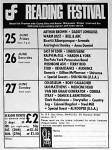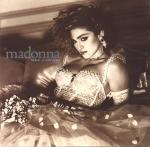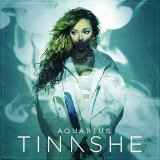We haven’t heard too much from our very own Grinch this year; I suppose that means the restraining order worked. Unfortunately, he’s just reminded us that we have a contractual obligation to publish his annual High Five contribution. Feel free to read this, but please bear in mind that it contains bad attitude from the outset.
Why does every performer these days want to use a loop pedal? It was a challenge in the seventies when John Martyn and Brian May used WEM Copicats with real tape loops (well, where did you think the name came from?) to beef up their guitar noodlings. It was proper difficult then because you never knew when the tape would wear out or jam. Then KT Tunstall went on “Later” and suddenly every cheapskate player and singer wants to ditch the rhythm section and everyone sounds like everyone else. It’s a nice gimmick but it’s not a substitute for real players. Just leave the looper at home; it’s not big and it’s not clever.
What’s going on with festivals now? When I was a lad, you only had Reading (Jazz and Blues) Festival to contend with; Glastonbury was just a couple of hundred comatose stoners looking for ley lines and T in the Park wasn’t even in the horizon for Stuart Clumpas. Festivals only happened in the British summer month(s) and featured bands that everyone knew. And now there are mainstream festivals, corporate festivals, boutique festivals and bonkers local festivals with tribute bands, has-beens and newcomers. But watch your step; if you buy a ticket for a festival, buy it with a credit card, because there’s a pretty good chance it won’t actually happen – your choice.
I know, it’s a shocker; Madonna has a diva strop. Who would have predicted that? Ms Ciccone gets on stage just under an hour late in Manchester and what does she do? Well, most of us would apologise, wouldn’t we, but not Madonna Veronica Louise. No she rips into the booing audience and calls them diva bitches. There’s a lesson to learn here; if you have all of your light show (and your backup vocals and Autotune settings) stored electronically, then back the fecking things up, and not just once. Don’t use data loss as an excuse, because it’s no excuse, especially if you offer it up two days later. We all screw up; apologise and get over it. Your audience are paying your wages; never, ever forget that.
Well, we were all blown away by the stupendous Tidal launch this year, weren’t we? A motley bunch of rich musicians (and isn’t that Ms Ciccone again?) investing in a scheme to make themselves even more money, that’s just what we need isn’t it? The launch event looked like a failed PowerPoint training exercise, proving that musicians should stick to what they do best. It’s been pitched as an attempt to generate decent loyalties for writers, but it smells of elitism and the music-buying public have ignored it in their droves. If you still believe that music has any value, you can ignore streaming services completely and buy physical copies of your music.
So we’re all supposed to be streaming now and no-one wants to buy physical copies of music any more. Well it’s a bit confusing, but I’ll do my best to make it simple and use small words. CDs: apparently they’re on the way out at the same time as they’re on the way back in again. If you believe the insiders, CDs are about to become a premium product, for the second time as a medium for ultra-high quality sound, while vinyl sales (and record deck sales) are still on the rise in 2015. If the public are showing signs of paying to actually own musical artefacts, then I’m well chuffed, but my inner cynic starts to get twitchy when Tesco are selling vinyl again and ‘classic’ albums that were originally released on vinyl, then cassette, then CD, then online as MP3s and streamed versions are back to vinyl again. I’m just pleased I kept hold of all my old 8-tracks.
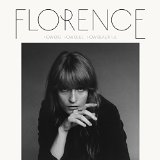 Florence + The Machine is a relatively rare and interesting type of multi-million selling global superstar to be found in this or even the past decade. She is more suited to the mid-eighties/nineties stretch of pop stars that included Kate Bush, Prince and Bjork – artists that used idiosyncratic and sometimes iconoclastic imagery that was key to their success but didn’t define it and whose music was frequently strange and brilliant but sold by the shed load. Where Florence Welch differs from her idols though is that her musical choices so far have found the singer already approaching what could be regarded as caricature of herself. Her debut album “Lungs” was a rag-tag but solid collection of goth-pop which established her eclectic eccentricity and 2011’s highly polished “Ceremonials” had some fantastic songs which were often marooned in a samey, shouty and exhaustingly one-note soundscape. “How Big, How Blue, How Beautiful” sees Florence set out to actively change this, to breath nuance and restraint and personal experiences into an album’s worth of songs.
Florence + The Machine is a relatively rare and interesting type of multi-million selling global superstar to be found in this or even the past decade. She is more suited to the mid-eighties/nineties stretch of pop stars that included Kate Bush, Prince and Bjork – artists that used idiosyncratic and sometimes iconoclastic imagery that was key to their success but didn’t define it and whose music was frequently strange and brilliant but sold by the shed load. Where Florence Welch differs from her idols though is that her musical choices so far have found the singer already approaching what could be regarded as caricature of herself. Her debut album “Lungs” was a rag-tag but solid collection of goth-pop which established her eclectic eccentricity and 2011’s highly polished “Ceremonials” had some fantastic songs which were often marooned in a samey, shouty and exhaustingly one-note soundscape. “How Big, How Blue, How Beautiful” sees Florence set out to actively change this, to breath nuance and restraint and personal experiences into an album’s worth of songs.
Markus Dravs has taken over almost all production duties from Paul Epworth (who still co-produces one track here) and has laid down the law, it seems, telling Welsh that certain well-worn subjects are off-limits, such as water metaphors (a few still slip through the net, excuse the pun) and an early song called “Which Witch” bought to him by Welch was rejected because of song title only (and that too still appears, but as a bonus track only). He wanted to put her voice up front and to be more exposed and vulnerable, less multi-tracked, and for the music to also have space to breathe. Will Gregory, the introvert half of Goldfrapp, was bought on board as Welch wanted lots of brass and she’s certainly got her wish. It seems that there was some compromise on both sides, as this is a different Florence album in part, but it is not to be considered as any real, radical departure in sound. With the strength of songwriting on display here and a successful transition to more interesting and diverse soundscapes this is not important, it’s the most balanced and cohesive album that Welch has made thus far.
The first song to be heard from “How Big, How Blue, How Beautiful” was the striking “What Kind of Man”. With Welch’s voice manipulated to echo that of Karin Andersson from The Knife, she sounds genderless and possessed and it’s something of a shame that guitars and drums crash in all too soon. The mania and panic associated with Welch and evidenced here again is offset beautifully by a return to the coolness of this initial refrain though and “Ship to Wreck”, with its soaring near gospel middle-eight, continues with the indie rock motifs . The title track’s opening line ‘between a crucifix and the Hollywood sign’ is not the only thing that sounds like you might hope a Madonna track would in 2015; it has a spaciness and warmth that is designed to be heart- swelling and it is. The long instrumental play-out is the most optimistic that a Florence track has ever sounded, assertive trumpets and forthright strings herald a new dawn with all of its possibilities. Sounds cheesy perhaps but it’s sincere and as gorgeous as hell.
“Various Storms & Saints” and “Long & Lost” continue with an acoustic, bare bones but lush instrumentation and “Caught” is a mid-tempo r’n’b song with an unexpected country sway and is swoonsomely heartbroken. Over a plaintive organ and understated orchestration it is “St Jude” which cements absolute melodic perfection with Welch’s forever fallen angel, compulsively drawn to chaos. “Delilah” and “Third Eye” will delight the Florence diehards with both tracks pulling across the established, bombastic and commercial sound from her previous two albums and turning the dial up even further to not-quite ludicrous settings. Album closer “Mother” incorporates all of these ingredients but stirs them about with a 1970’s blues-rocker shtick that creates something altogether more strange and the final, thrashing fifty seconds genuinely excite. Florence + The Machine may never be able to do subtle but with “How Big, How Blue, How Beautiful”, Welch has made considerable progress with making music that is more complex, satisfying and timeless sounding than before, never alienating her current fan base and undoubtedly attracting many more new ones in the process.
So, what have we got this time then? A new premium-quality music streaming service; well, that’s just what we need; isn’t it? Especially when you line up a bunch of superstar investors for a launch event that makes the service sound like it’s going to put an end to world conflict. I’m not even giving you a link to the video of the launch because on the tedium scale it’s somewhere between a party election broadcast and watching custard set. Here’s the summary: two minutes of introductions (to a crowd that apparently hasn’t heard of any of the celebrity stakeholders), ten minute ‘inspirational’ speech from Alicia Keys, two minutes of signing ‘the document’ and two minutes of standing around looking embarrassed while someone tries to find a border collie or a cattle prod. Sixteen minutes and Madonna only hogged the limelight once; that has to be a record. I’ve had more fun at the dentist.
Just take a look what this motley crew (they’ve got one thing in common, but we’ll get to that) are so evangelical about; what are they actually trying to sell you? Basically, the sales pitch is that it’s like Spotify but better, which means you have to pay twice as much for it. I’m not saying Spotify is perfect but if the alternative is punters downloading illegally and artists being paid bog all, then I’m on the side of Spotify. Tidal isn’t an attempt to address the big issue of music having no value because you can download it free from any number of illegal sites, it’s purely about commercial rivalry; we’re better than Spotify but that’s reflected in the subscription price. Unlike Spotify, there isn’t a ‘free’ version of Tidal, you buy in or you don’t.
And then there’s “lossless” compression. In the words of John Lydon, ‘ever get the feeling you’ve been cheated’ – there’s no such thing as lossless compression. You can compress something so that it sounds reasonable on a phone or a media player, but why not try playing that same file through a decent hi-fi setup. No, don’t, that was rhetorical, it’s going to sound horrible; if you take information out of an audio file, it’s going to be noticeable eventually if your ears do more than keep your head balanced. If you stream audio, the higher the quality, the more problems you’ll have with buffering so you wouldn’t want to make things more difficult by introducing video playback, would you? Yeah, you just might, and you might want to introduce social features (nothing new) and have the music carefully curated (obviously not patronising at all – we’ll tell you what you should like) while you offer exclusivity (you can hear the new Beyoncé song here first).
So, the bottom line is that you can pay twice as much as you would pay for Spotify for the dubious privilege of “lossless” streaming which will sound just the same on your earbuds or PC speakers; anyone buying in to that yet? Thought not; how about new artists, surely an ‘artist-owned’ service would help to bring new talent through the system. No, not even a mention, so who benefits from this premium service? Easy, the bunch of artists on the stage at the beginning of this piece. The bunch of artists who have one thing in common; against the odds in the twenty-first century, have already made huge amounts of money from the dying embers of the music business. None of the artists involved in this enterprise actually need more money, but they’re happy to take if they can get it.
Maybe Jay Z’s pissed off that Dre managed to corner the market in headphones, but that’s no excuse for launching this ill-conceived ‘premium’ service. No-one involved with this project comes out of it with any credit.
An archetypal indie band of the type you hear less and less these days, Hospitality’s second album is a masterful example of restraint, space and structure. Instrumentals, vividly detailed middle eights and trumpet solos are all given ample breathing space. Never too precise or self -indulgent, Amber Papini sounds like a fallen it-girl spending her days and nights on the phone smoking in coffee shops and crashing on other peoples’ sofa-beds. An album that reveals more with each listen, Hospitality are both old fashioned and forward-looking in their execution of guitar, drums and the occasional synth pop.
SZA, Kelela and Kindness have all been responsible for building the momentum of the new slowed-down and sonically screwed with RnB genre that came out of the remains of classic Aaliyah and Brandy and Cassie’s massively influential and singular debut. All commendable in the own right, none of these have yet mastered the all essential ingredient of delectable and persistent melodies like Tinashe has on her sublime debut album, the most consistent and important RnB album from a female vocalist in the last couple of years.
 Azealia Banks – “Broke With Expensive Taste”
Azealia Banks – “Broke With Expensive Taste”
Her own worst enemy at times, but maybe that makes more sense now “Broke with Expensive Taste” has finally arrived in one piece and in the way Banks wanted it to. ‘I try all the cultures’ she sings over the appropriately tight and popping “Soda” and indeed she does; soca, hip-house, trap, surf-rock, UK garage and very deep house music all feature. The link to all of these styles is Banks herself; her inability to compromise and her keen ear have ensured her debut is one of the best within the genre, whatever genre that may be.
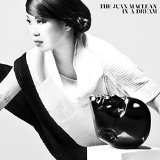 The Juan Maclean – “In A Dream”
The Juan Maclean – “In A Dream”
It’s hard not to mentally tick off the many influences that bubble up whilst listening to The Juan Maclean’s third album. Dance and club music is unavoidably indebted to its past, there are over five decades of a rich, diverse history to get lost in but McLean wisely avoids pastiche and nostalgia and creates his own nocturnal fantasy. With the essential Nancy Wang’s deadpan disco queen vocals dominating two thirds of the album, the duo have created their most successful and exciting collection to date.
Not quite her masterpiece, so far that honour still falls upon 2011’s ground-breaking “Strange Mercy”. Annie Clarke’s first self-titled album is, following eleven months of getting-to-know-you time, probably her most strange and artful release so far. The original conceit is that it was going to be her most accessible and ‘pop’ album to date and yes, one of the songs does sound like a classic Madonna ballad. But tracks that start off as off-colour, other-worldly RnB end up somewhere completely unrelated, bruised and bashed 3 minutes later – and it works beautifully. A genuine superstar, St Vincent’s ‘St Vincent’ is one of the year’s brightest and most brutal releases.
We reviewed Bob Malone’s excellent “Mojo EP” earlier this year and a couple of months later we sent Allan out to the badlands of Southend-on-Sea to see the final show of Bob’s UK tour. We were so impressed that we asked Bob to contribute to this feature. Here’s Bob’s festive favourite five:
‘Tis the season, and all that sort of thing; I can’t lie – I get radically sentimental about the holidays. For most of the year, I bash pianos, sing songs of alienation and heartbreak, and knock out one-nighters like the road warrior that I am, but come Christmakuh, don’t come around here looking for any of that action – I’ll be busy baking cookies, bitchez! These five records mean a lot to me, and they are what I think of when I think of this time of year.
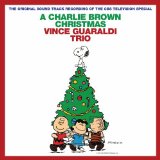 “A Charlie Brown Christmas” – Vince Guaraldi Trio Vince was one of the great jazz pianists, with a magical, melodic, understated style all his own. This music is the perfect companion to what was probably most perfect Christmas TV special ever made. You’ll smile, you’ll reflect quietly, you get a little melancholy, and you will dig that swinging rhythm section every year for the rest of your life. Oh, and I have this record on green vinyl – you know you want one. Timeless.
“A Charlie Brown Christmas” – Vince Guaraldi Trio Vince was one of the great jazz pianists, with a magical, melodic, understated style all his own. This music is the perfect companion to what was probably most perfect Christmas TV special ever made. You’ll smile, you’ll reflect quietly, you get a little melancholy, and you will dig that swinging rhythm section every year for the rest of your life. Oh, and I have this record on green vinyl – you know you want one. Timeless.
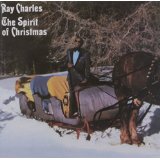 “The Spirit Of Christmas” – Ray Charles This record is so good, you don’t even have to wait for the holidays to put it on. Crazy hip arrangements, and Ray singing his ass off and playing a sweet, sweet Fender Rhodes throughout. He even manages to make “Rudolph the Red Nosed Reindeer” sound badass. There will never be another Brother Ray, so bow down and dig. I should note, however, that this record has the widest bad-album-cover-to-great-music spread ratio ever. A book definitely not to be judged by its cover.
“The Spirit Of Christmas” – Ray Charles This record is so good, you don’t even have to wait for the holidays to put it on. Crazy hip arrangements, and Ray singing his ass off and playing a sweet, sweet Fender Rhodes throughout. He even manages to make “Rudolph the Red Nosed Reindeer” sound badass. There will never be another Brother Ray, so bow down and dig. I should note, however, that this record has the widest bad-album-cover-to-great-music spread ratio ever. A book definitely not to be judged by its cover.
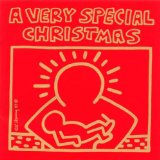 “A Very Special Christmas” – Various Artists This mid 80s collection sold gazillions and is full of great tracks – Bruce Springsteen & the E Street Band doing the great Charles Brown’s “Merry Christmas Baby” (way cool, but not as good as the 1977 bootleg of Bruce doing “Santa Claus Is Coming To Town,” which just can’t be touched – I’m from New Jersey – this shit is IMPORTANT!), Chrissie Hynde’s snow-meltingly sexy version of “Have Yourself A Merry Little Christmas,” and Madonna totally nailing “Santa Baby” – and I frigging HATE Madonna – but credit where credit is due. Most importantly, though, it’s got Run – D.M.C. doing “Christmas In Hollis” – which just might possibly be the greatest thing ever… “It’s Christmastime in Hollis, Queens, mom’s cookin’ chicken and collard greens…” Yes, Indeed. Oh and speaking of Charles Brown, everyone needs to own “A Very Special Christmas II” just for the recording of his duet with Bonnie Raitt on the aforementioned “Merry Christmas Baby.” It’s the kind of thing Top-5 lists were made for.
“A Very Special Christmas” – Various Artists This mid 80s collection sold gazillions and is full of great tracks – Bruce Springsteen & the E Street Band doing the great Charles Brown’s “Merry Christmas Baby” (way cool, but not as good as the 1977 bootleg of Bruce doing “Santa Claus Is Coming To Town,” which just can’t be touched – I’m from New Jersey – this shit is IMPORTANT!), Chrissie Hynde’s snow-meltingly sexy version of “Have Yourself A Merry Little Christmas,” and Madonna totally nailing “Santa Baby” – and I frigging HATE Madonna – but credit where credit is due. Most importantly, though, it’s got Run – D.M.C. doing “Christmas In Hollis” – which just might possibly be the greatest thing ever… “It’s Christmastime in Hollis, Queens, mom’s cookin’ chicken and collard greens…” Yes, Indeed. Oh and speaking of Charles Brown, everyone needs to own “A Very Special Christmas II” just for the recording of his duet with Bonnie Raitt on the aforementioned “Merry Christmas Baby.” It’s the kind of thing Top-5 lists were made for.
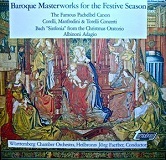 “Baroque Masterworks for The Festive Season” – Württemberg Chamber Orchestra Betcha didn’t see this one coming! Before I discovered rock and roll and the blues, and Return to Forever, and the New Orleans piano professors, and “The Chronic” – I was an 11-year-old classical piano prodigy and this was one of the first records I ever bought with my own money. It’s got the Pachelbel Canon, and the Torelli Christmas Concerto on it. Just get it. It’ll make you weep.
“Baroque Masterworks for The Festive Season” – Württemberg Chamber Orchestra Betcha didn’t see this one coming! Before I discovered rock and roll and the blues, and Return to Forever, and the New Orleans piano professors, and “The Chronic” – I was an 11-year-old classical piano prodigy and this was one of the first records I ever bought with my own money. It’s got the Pachelbel Canon, and the Torelli Christmas Concerto on it. Just get it. It’ll make you weep.
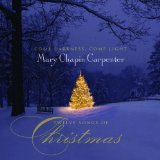 “Come Darkness, Come Light” – 12 Songs Of Christmas” – Mary Chapin Carpenter A dozen original Christmas tunes by one of our great songwriters – not the normal celebratory, sentimental, or breezy types of things you hear this time of year, they are instead reflective and realistic. When you have that seasonal melancholy, and you need to dig deep – this is the one you need to hear.
“Come Darkness, Come Light” – 12 Songs Of Christmas” – Mary Chapin Carpenter A dozen original Christmas tunes by one of our great songwriters – not the normal celebratory, sentimental, or breezy types of things you hear this time of year, they are instead reflective and realistic. When you have that seasonal melancholy, and you need to dig deep – this is the one you need to hear.
 It goes without saying that each generation gets the pop stars it deserves. Of the ones remaining and still performing, Madonna, Boy George and Prince belong to what could be called my era, not too shoddy. This current batch of kids will eventually become nostalgic about Beyonce, Adele and, I’m sorry, One Direction. In the last five years Taylor Swift has been riding their coat-tails with her persistent country -pop and, for better or worse, she may turn out to be the biggest pop star of them all, certainly of 2014. “1989”, Swift’s fifth album, is not only the year of her birth but also refers to the eclectic and idiosyncratic musical chart toppers of that same year, part of my era, and which allegedly inspired her to finally, and somewhat predictably, make the full transition to that of a pop star.
It goes without saying that each generation gets the pop stars it deserves. Of the ones remaining and still performing, Madonna, Boy George and Prince belong to what could be called my era, not too shoddy. This current batch of kids will eventually become nostalgic about Beyonce, Adele and, I’m sorry, One Direction. In the last five years Taylor Swift has been riding their coat-tails with her persistent country -pop and, for better or worse, she may turn out to be the biggest pop star of them all, certainly of 2014. “1989”, Swift’s fifth album, is not only the year of her birth but also refers to the eclectic and idiosyncratic musical chart toppers of that same year, part of my era, and which allegedly inspired her to finally, and somewhat predictably, make the full transition to that of a pop star.
Max Martin has produced and written for the cream of Billboard magazine’s sweethearts over the past decade and a half and Swift called on him to help with a clutch of songs for her last album, the gazillion-selling ‘Red’. Those tracks were the ones that provided the album with a contemporary pop sheen, dubstep and more heavily electronic soundscapes featured, and some of its biggest hits. Martin returns here with the weightier task of almost full production responsibilities of “1989” and co-writes with Swift herself. He does a consistently robust and appropriately timeless job here and, between the two of them, the songs are frequently sharp, smart and exhilarating and avoid any of the obvious potential pitfalls; no features, no EDM and no Dr Luke.
The best moments here, and there are many to choose from, are the more thundering and urgent guitar, drums and synth tracks that call to mind pop acts such Go West, Simple Minds and Kelly Clarkson. “Out of the Woods” is not only the biggest success here, Swift’s sneer is surprisingly apparent and the gulping repetitive chorus is perfect, but almost the most lyrically competent and stylish. “All You Had to Do Was Stay” with its cheeky vocal nod to the Eurythmics, “I Wish You Would” and “Bad Blood” all provide rollicking middle-eights, tight arrangements and artful choruses that all make the intended impact. “Style” is an elegant mid-tempo electro soon-to-be chart topper which offers up the hookiest chorus – and that’s saying something here – and “Wildest Dreams” is as close as Swift gets to a mood piece although it owes quite a debt to the omnipresent Lana Del Rey sound.
The rest of “1989” is serviceable enough but lacks the passion of the better tracks and struggles to live up to the album’s conceit. “Welcome to New York” is not only one of the very worst, most insipid songs written about the city – and also a rare moment when the album also slips into musical parody of the period it’s influenced by – but it is almost a genuine reflection of it as seen through the Swift’s eyes as a recent, over-excited new comer. It also highlights just how bland and naïve lyrically many of these songs are; Starbucks lovers, it’s all good, haters and players and “How You Get the Girl”, even if used with irony, make the album sound like a massive corporate tie-in with a particular brand of young girls who can afford to live in a big city. Since the album’s release Swift has indeed, and not without controversy, been appointed as an official ambassador of New York; it wasn’t like this with Debbie Harry.
If Swift were to be a representation of the very best that pop could offer in 2014 then “1989” would confirm that pin sharp songwriting and hooks were still in abundance and lush, enveloping production was of a consistently high standard. But within the genre that is only one part of many essential components. Her previous albums have been built on an authentic and believable persona where it was possible to identify the style of the song – the actual sound of it – with the singer; here she sounds technically proficient but for the main part generic. The major players of the last thirty years right up to and including Beyonce and Adele have all developed a sound that is quintessentially theirs but Swift has failed to do that here; there is nothing exceptional or original about the way “1989” sounds. It is unlikely that her next few records will see a return to country music so maybe they will continue to build on Taylor Swift’s respect for pop and see her as confident enough to be as unpredictable and individual as her idols; or maybe she is readjusting the standard.
 The objective Zola Jesus set herself for her fourth album was to face her own fears about how her love for pop music would eventually have to inform her work and what that might sound like. It is significant maybe that the oldest song here and the one that finally forced Jesus into the glare of potential mainstream and started the ball rolling, “Dangerous Days”, is also the purest pop song on “Taiga”. It has a brightness that contradicts its title, a brilliant pre chorus, an actual chorus which is only slightly less captivating and a sonic energy that’s slick and addictive and brings to mind the slightly more intricate and risky songs from Madonna’s mighty “Ray of Light” album.
The objective Zola Jesus set herself for her fourth album was to face her own fears about how her love for pop music would eventually have to inform her work and what that might sound like. It is significant maybe that the oldest song here and the one that finally forced Jesus into the glare of potential mainstream and started the ball rolling, “Dangerous Days”, is also the purest pop song on “Taiga”. It has a brightness that contradicts its title, a brilliant pre chorus, an actual chorus which is only slightly less captivating and a sonic energy that’s slick and addictive and brings to mind the slightly more intricate and risky songs from Madonna’s mighty “Ray of Light” album.
The remainder of Taiga is not really a pop record although it frequently aspires to be one. Soundscapes are stripped almost entirely of any of the glitch that featured on 2011’s “Conatus” or the muddy density on her brilliant breakthrough album “Stridulum II” and replaced by something that is undeniably big and rich but simpler and more concentrated than before. A lot of the songs have beautiful, powerful intermissions; it’s just that too frequently the melodies are lacking the strength to push these tracks to required level, the one which you presume she had in her sights. Dean Hurley co-produces with Jesus and is an odd choice given his primary job as David Lynch’s new sound man, responsible for producing both of Lynch’s inconsistent and naive solo albums, and hardly a name synonymous with making music that can be sung along to. There are references here to the Ryan Tedder meets Sia school of Beyoncé power pop on the crashing but dull “Lawless” and the Rihanna-phrased “Long Way Down” but neither songs would pass the pop queen’s test of a tune that hijacks relentlessly.
The more successful tracks, and “Taiga’” is the definition of a front-loaded album, happen in the first half. “Dust” has a woozy, avant r’n’b doo-wop swing which is hypnotising and commercially-minded and “Go (Blank Sea)” like Petula Clark, and hundreds after her, successfully sees Jesus pining for the eternal pop never-never land of “Downtown”. “Hunger” has a thrusting and bewildering attack of beats, brass and synths – at one point it’s hard to distinguish between the two- and a glacial, persistent string part and is exhilarating and sharply euphoric. “Ego” is a suspended hymn of considerable power where all of “Taiga”’s elements fall into place; a lucid and possessed vocal interrupted by sheets of brass that morph effortlessly into aching strings. The ongoing presence of strings and brass in particular bear out the theory that “Taiga” is more of a continuation of the stripped down “Versions” of last year then something you might hear in a bar. From here on in and midway through “Taiga”’s playing time the focus is lost, however, and gives way to repetition and mediocre tunes. “Hollow”, for example, attempts to salvage some drama and presence but is an oddly similar reimagining of the far superior “Hunger”.
Since the release of “Taiga”, Jesus has been remixed by the likes of The Juan Maclean and Diplo, a still relatively underground sophisticated pop-dance act, and the man rumoured to be producing the next Madonna album. Both artists have done commendable jobs in highlighting the hooks in what were admittedly already two of the album’s stronger songs (“Dangerous Days” and “Go”). Where their real strength lies, though, is in taking Jesus’ music to a demographic previously unaware of her and potentially initiating an interest to investigate further. This is where Jesus and “Taiga” stumble as the initial promise of something different and more accessible is never really delivered so new fans are unlikely to convert and current ones will be dissatisfied at the loss of the incredible depth and half-shaded mystery that permeated her earlier work. A good album still with some great songs but “Taiga” doesn’t quite provide the soundtrack that Zola Jesus commands and deserves, whether she continues to chase her big pop arrival remains to be seen but you feel that this isn’t it.
 Nottingham-based Ronika has fashioned her debut album, named after the now closed record shop that stocked her essential loves and obsessions, after three crucial but somewhat lesser known albums made in the early part of the 1980s. Shannon’s “Let The Music Play”, Gwen Guthrie’s “Portrait” and, to a lesser extent, Cristina’s “Doll in the Box”. That’s electro-pop, disco, freestyle and boogie with some arch knowingness thrown in for the hell of it. American dance music made at a time of racial and sexual revolutions; soul music to linger in between the wink and kiss-off attitude, when people danced like it would save their lives. Ronika seems to get this relationship intrinsically and her album is one that also has a slightly unhinged quality which cements a clear persona and her mix of the old and new is wonderfully realised and, when it’s at its strongest, still fresh sounding.
Nottingham-based Ronika has fashioned her debut album, named after the now closed record shop that stocked her essential loves and obsessions, after three crucial but somewhat lesser known albums made in the early part of the 1980s. Shannon’s “Let The Music Play”, Gwen Guthrie’s “Portrait” and, to a lesser extent, Cristina’s “Doll in the Box”. That’s electro-pop, disco, freestyle and boogie with some arch knowingness thrown in for the hell of it. American dance music made at a time of racial and sexual revolutions; soul music to linger in between the wink and kiss-off attitude, when people danced like it would save their lives. Ronika seems to get this relationship intrinsically and her album is one that also has a slightly unhinged quality which cements a clear persona and her mix of the old and new is wonderfully realised and, when it’s at its strongest, still fresh sounding.
Recorded over a four-year period, “Selectadisc” features some material already heard on Ronika’s previously-released and well-received EPs and it’s some of the best music here. “In the City” is a fantastic song, a smoothly rolling ode to metropolitan night-time living; it gets under your skin and under your feet and is the kind of record that should have been huge and at one time would have been. “Video Collection”, “What’s in your Bag” and “Forget Yourself” are reminiscent of a Tom Tom Club/Gwen Stefani type of camp pop and are all essential. The two duets with Charles Washington, “Clock” and “Paper Scissors Stone” show a more experimental showy side and “1000 Nights” trips itself up only because it is very nearly a facsimile of Shannon’s tensely terrific “Give Me Tonight” and even then it’s still enjoyable enough. Ronika’s voice has occasional flashes of very early Teena Marie soulfulness but is smoother and less dramatic; make no mistake she can sing and comparisons to an early Madonna, at least vocally, sell her short.
With her arresting, canny and playful image Ronika falls into a category of idiosyncratic women who adore and emulate different forms of dance pop and understand the aesthetic of late eighties MTV. She is in good company with the likes of Annie, Roisin Murphy and the newly refreshed Kyla La Grange and displays an ability to write songs that are not only instant but those which also develop into lifelong soundscapes that accompany moments of invaluable dance-floor escapism. All of the really important dance music has done this, whatever the sub-genre and “Selectadisc” has a high count of great songs and a fun but involved groove grounding the majority. Ronika will be around for some time, it appears; her devotion to making and performing music seems inescapable and is irresistible. The UK dance scene – if such a thing still really exists – should welcome her with open arms.
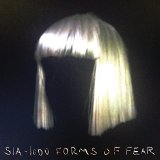 Her association with mega-watt superstars including Beyonce, Rihanna and Katy Perry has meant that bipolar, acutely self-conscious and socially anxious singer-songwriter Sia has never been more famous or exposed. A cruel irony or maybe the plan all along? Four years after her last album, “1000 Forms of Fear”, her sixth, with its shrewd marketing campaign and consistently, relentlessly mighty major-key choruses means that every hen party and XY and Z Factor hopeful will require a copy, but there’s always been much more to Sia than straightforward show-boating. Slowly veering towards coffee table Dido-isms over the course of her discography, the late noughties saw Sia Furler kick through the inoffensive AOR that always threatened to dominate, and collaborated with guitar and synth pop super-producer Greg Kurstin on 2010’s “We Are Born”. More Cyndi Lauper than Madonna (although a Madonna cover was included, Furler and Kurstin both displaying their collective pop chops) it was more forthright, raucous and brightly commercial than anything before, and still managed to incorporate the power ballads that she is better known for. It was also the album that pushed Sia into semi-retirement from performing, instead concentrating on writing material for other artists, an endeavour that has proved to be more successful than her own solo career.
Her association with mega-watt superstars including Beyonce, Rihanna and Katy Perry has meant that bipolar, acutely self-conscious and socially anxious singer-songwriter Sia has never been more famous or exposed. A cruel irony or maybe the plan all along? Four years after her last album, “1000 Forms of Fear”, her sixth, with its shrewd marketing campaign and consistently, relentlessly mighty major-key choruses means that every hen party and XY and Z Factor hopeful will require a copy, but there’s always been much more to Sia than straightforward show-boating. Slowly veering towards coffee table Dido-isms over the course of her discography, the late noughties saw Sia Furler kick through the inoffensive AOR that always threatened to dominate, and collaborated with guitar and synth pop super-producer Greg Kurstin on 2010’s “We Are Born”. More Cyndi Lauper than Madonna (although a Madonna cover was included, Furler and Kurstin both displaying their collective pop chops) it was more forthright, raucous and brightly commercial than anything before, and still managed to incorporate the power ballads that she is better known for. It was also the album that pushed Sia into semi-retirement from performing, instead concentrating on writing material for other artists, an endeavour that has proved to be more successful than her own solo career.
This sound is both amplified and smoothed out on “1000 Forms of Fear”. “Chandelier” starts off sounding a lot like Rihanna and then it doesn’t sound like Rihanna at all. Once you’ve heard, or experienced, its staggeringly audacious chorus you’re unlikely to forget it and it’s hard to imagine anyone else, let alone Rihanna, sing it. Almost a novelty record, such is its persistent, cartoonish swoops and appropriately high drama; one of the most incredible things about this particular song, one that has already defined and led this era, is how much it is a Sia song and could be only be meant for her. Her vocal eccentricities, and they have always been there but never so pronounced, ensure that this ultimately melancholic song has a clear personality attached to it and could never have been interpreted as effectively by any of its potential owners.
“Big Girls Cry” and “Eye of The Needle” are both unsubtle belters that could soundtrack the next Bridget Jones movie and how you feel about this type of sentimental, rom-com ready music generally will determine how much you enjoy them but they are extremely well done here. Apart from the terrifically loping and previously released “Elastic Heart” which is co-produced by Diplo, Furler has again paired up with Kurstin and he is at the helm sonically throughout. Less playful and rambunctious than “We Are Born”, there are still some lovely touches here such as the shredded vocals on the chorus of the manically deranged “Free the Animal” which provides some respite from the reliance on a blared super-hook. The seductive, sawing, “Fair Game” shocks with a sudden, sickly , close-up xylophone solo competing with Sia’s distant moans, and an explosive final third, while “Hostage” gallops along with guitars and a retro Motown energy.
“Fire Meet Gasoline”, another power ballad and probably the crudest here, highlights the problem of Sia’s omnipresence within the current pop framework. It is without question a song which could be a big hit, it sounds like a million-selling Sia record but one which is already recorded by someone other than her. It sounds a lot like “Diamonds” or “Pretty Hurts”, r’n’b mid-tempos sung by two of the world’s most popular and famous female singers but it doesn’t sound like a record that Sia would ever sing. The same goes for the over-long, over-wrought and noisy album closer “Dressed in Black”. Compare these to the hissing and crackling psychodrama of “Cellophane” (‘Can’t you see I’m wrapped in cellophane, watch the blood pump through my veins, electricity floods my brain, can’t hide the pain’), a rare exercise in restraint here and one of the album’s best songs and the equally macabre, bell-flecked “Straight for the Knife” and it’s clear that some songs are closer to the singer’s own world and personal experiences than others and these are the most successful within this context.
Sia is at the very top of her game with “1000 Forms of Fear”, an album which can admittedly fatigue when played from end to end but when individual songs, or the extremely strong middle section, are played in isolation this is indeed some of the most warming but persistently dark and potent music that Sia has both written and performed. The problem is that we can now clearly see, understand and start to deconstruct her formula, within these twelve songs her technique is laid out bare for all to see. The consistent use of metaphors and building a lyrical theme around them rather than the metaphor fitting the songs’ content (nine out of the twelve titles – look at them!) and lyrics which are straightforward and defy any kind of confusion or mis-reading, her traditional use of verse-chorus-verse-bridge-chorus writing and key changes which are predictable but wholly satisfactory; there is no deviation from this pattern. Pop’s most reclusive queen may have her back to the audience but she isn’t the reluctant star she proclaims and “1000 Forms of Fear”is her loudest cry for self-recognition so far and will undoubtedly be her must successful. Good thing too as it seems Sia has finally become tired of standing in the shadows.
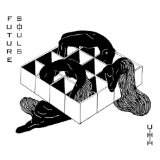 The third album by LA-based female duo Uh Huh Her is meant to be their concession to dance music, not that you couldn’t play their previous material in a club but “Future Souls” is intended to take you further into the realm of abandoned dance floor hedonism. Camila Grey and Leisha Hailey should be congratulated for showing restraint and not making the EDM-polluted monstrosity that this could have been. It doesn’t chase trends and there are no David Guetta or will.i.am attempts at shoehorning six different sub genres into a four minute track. But then Uh Huh Her haven’t really made a dance record here at all. This album is in fact more of a continuation of their elegant, electro-pop sound but with considerably more electronics and fewer guitars. Whether it has reinforced and strengthened their position in a very crowded and ambitious arena will be mainly dependent on their songwriting skills and ability to establish a more defined personality – something they have struggled with before.
The third album by LA-based female duo Uh Huh Her is meant to be their concession to dance music, not that you couldn’t play their previous material in a club but “Future Souls” is intended to take you further into the realm of abandoned dance floor hedonism. Camila Grey and Leisha Hailey should be congratulated for showing restraint and not making the EDM-polluted monstrosity that this could have been. It doesn’t chase trends and there are no David Guetta or will.i.am attempts at shoehorning six different sub genres into a four minute track. But then Uh Huh Her haven’t really made a dance record here at all. This album is in fact more of a continuation of their elegant, electro-pop sound but with considerably more electronics and fewer guitars. Whether it has reinforced and strengthened their position in a very crowded and ambitious arena will be mainly dependent on their songwriting skills and ability to establish a more defined personality – something they have struggled with before.
An interesting reference point here is girl group All Saints, produced by William Orbit; very occasionally the quality comes closer to Orbit’s definitive work with Madonna on “Ray of Light”. It has a late 90’s naiveté both vocally and sonically, which can sound undernourished but can also shine and warm through with harmonies that can swell up unexpectedly, from an intro for example. And there are some good songs here too. Album opener “Innocence”, for example, creates a steady impression and beneath a lightly bouncing acid house synth motif the melodies morph into something smooth but sticky; it’s a surprise when it finally clicks. “Bullet” has a nicely thought out structure and nagging chorus and “Time” sounds a bit like a highly-polished Wendy and Lisa.
For a dance album it’s maybe surprising that the two best songs on “Future Souls” are the most introverted and intimate. “Strange Design” is both nurturing and arms-length, slowly spinning and calm with an obvious deb to the spooked and lush ballads of “Supernature”- era Goldfrapp. “Interconnect” is satisfyingly bolshy, with a cool and confident vocal but it’s still as considered and graceful as anything you would come to expect from the duo’s best material. And that is what reinforces the frustrations experienced elsewhere within the ten tracks found here. The evidence that the band can push themselves to make something memorable and compelling is often undermined by pleasant by completely disposable filler such as the auto tuned cliché of “It’s Chemical” and the thinness of “Nuthin Without Your Love” could be any one of an army of faceless electronics acts.
Uh Huh Her have a sizeable cult following that is undeniably linked to Leisha Hailey’s performance as Alice Pieszecki in the garish but often riveting series, The L Word. Hailey was the only out lesbian playing a lesbian in a show about lesbians. Her character was charismatic and spiky and in many ways the show’s moral compass – if only some of that character’s utter self-possession could be transposed to the duo’s musical ventures. Au Revour Simone, Chvrches and School of Seven Bells should be Uh Huh Her’s synth sisters in crime but where those female lead, synth-preoccupied groups each have an identifiable sound, UHH still suffer from a stranded sense of identity. This could be avoided if, instead of relying on self-production, the women allowed themselves to be guided and pushed by another studio professional. Although “Future Souls” is competent enough, let’s hope that the next album is the one that fully reveals the duo’s idiosyncrasies and tics in ways which are still only hinted at here.



